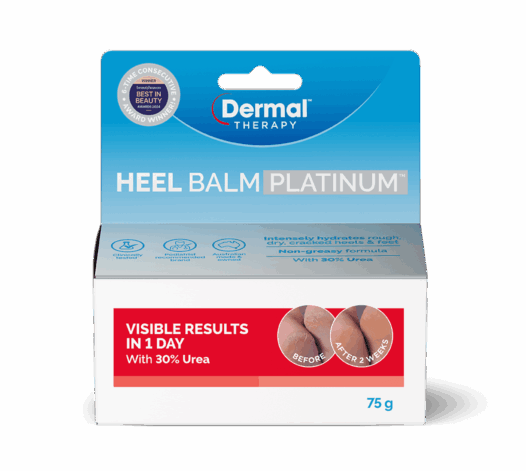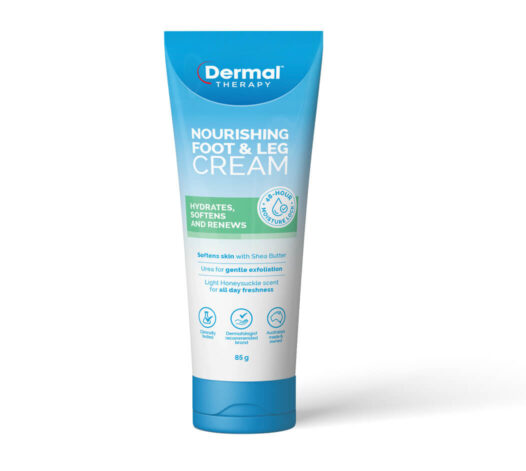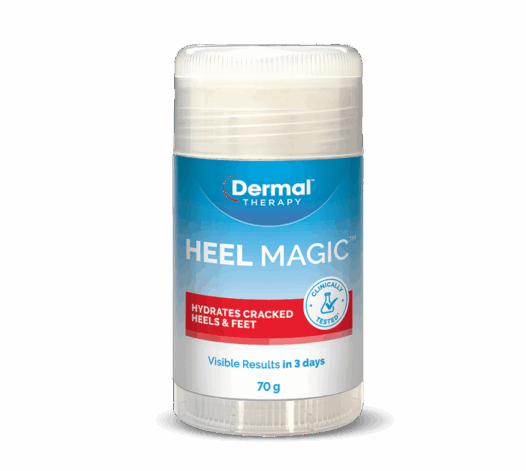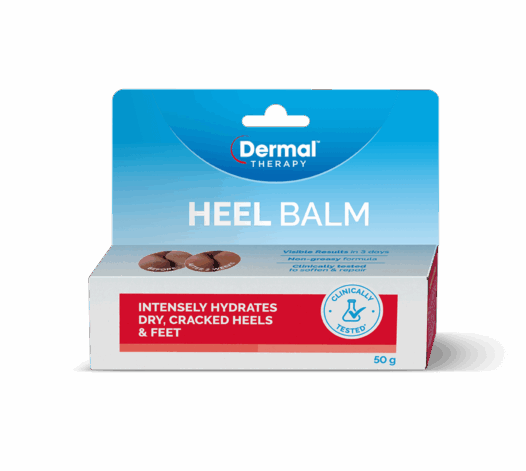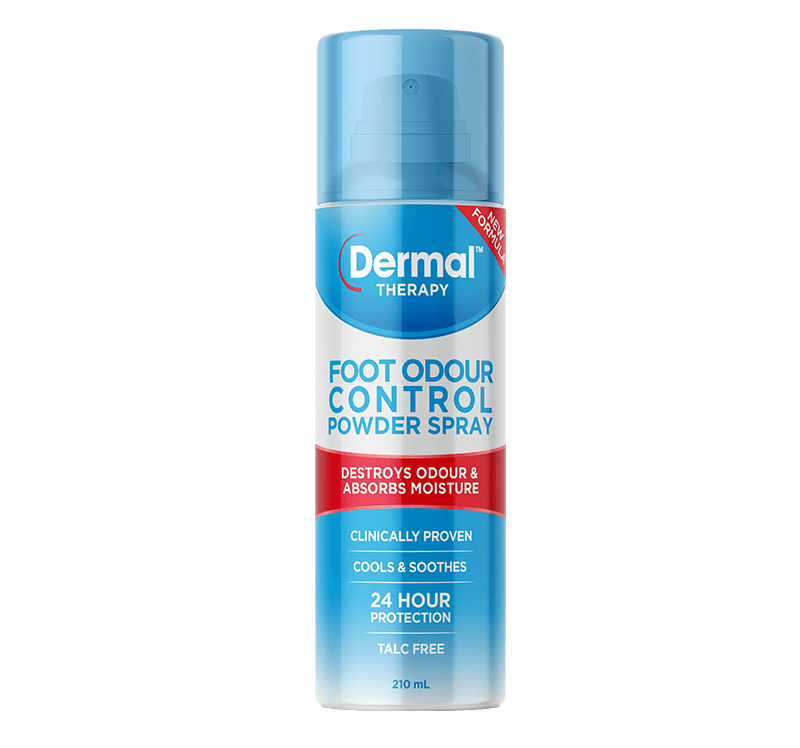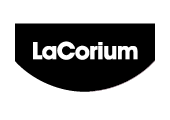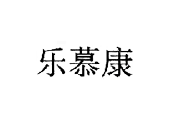Why Urea is a Game-Changer in Footcare – And How to Use It Effectively

Area
Daily UseKey Takeaways
- Senior podiatrist Neda Piri explains why urea is a powerhouse in footcare, offering exfoliation and hydration to treat dry, cracked, or diabetic-prone skin.
- She breaks down urea percentages: low (5–10%) for maintenance, moderate (10–20%) for dryness, and high (25%+) for severe or clinical foot conditions.
- Neda emphasises consistent use – applying daily to clean feet, focusing on problem areas, and avoiding between toes unless advised by a podiatrist.
- She recommends Dermal Therapy’s trusted, Australian-made products, available at major retailers, for effective and accessible long-term footcare.
When it comes to footcare, few ingredients are as powerful and scientifically backed as urea. As a podiatrist I am constantly raving about its many benefits and encouraging consistent long-term use for best results. At the end of every general nail and skin care podiatry appointment I will always apply and deeply massage some sort of urea based cream into the patients feet to ensure they’re leaving with hydrated skin. Urea is known for its hydrating and exfoliating properties and has become a gold standard in treating dry, rough, and cracked feet. Whether you’re dealing with mild dryness or diabetic-related anhidrosis, using a urea-based cream consistently can dramatically improve the health and comfort of your feet.
To get the best results, it’s important to choose the right concentration and apply it to your feet correctly. If you have had long standing dry skin, calluses, specific skin conditions such as psoriasis, fungal skin infections or eczema, or a systemic condition such as diabetes I would always recommend booking in to see a podiatrist for tailored advice as this information is all general in nature and should not replace medical advice. A podiatrist will gather a comprehensive medical history, perform an assessment of your skin and your overall foot health, provide a diagnosis or a detailed explanation of what may be causing the skin issues and introduce a treatment plan to address your foot skin concerns that may involve manual debridement of the skin with a sterile blade or other podiatry tools.
What Is Urea and Why Is It Used in Footcare?
Urea is a naturally occurring compound in the skin that helps maintain moisture balance and skin elasticity. In skincare, urea is synthetically produced and used in various concentrations depending on the skin concern. It works as a keratolytic (exfoliator) and humectant (hydrator), which means it helps to break down tough, dry skin and simultaneously draw moisture into the skin.
In footcare, this dual-action makes it especially effective for:
- Soothing cracked heels
- Rehydrating rough, calloused skin
- Supporting skin regeneration
- Managing diabetic-related dryness
Choosing the Right Urea Percentage for Your Feet
The concentration of urea in a product matters. Here’s a quick guide:
- Low concentrations (5-10%): Ideal for daily maintenance and mild dryness. These formulas offer gentle hydration without significant exfoliation.
- Moderate concentrations (10-20%): Best for moderate dryness or rough patches. This range starts to bring in noticeable softening effects.
- High concentrations (25% and above): Recommended for severe dryness, cracked heels, or diabetic footcare. This level delivers both intense hydration and effective exfoliation.
If you have used the appropriate concentration of urea for a duration of 4-6 weeks consistently and not visibly seen or felt a difference in your skin integrity then it would be best to seek the guidance of a podiatrist as manual debridement may be necessary. It is important to note that if a product has further irritated your skin, cease use and consult with your podiatrist, general practitioner or dermatologist.
How to Use Urea-Based Creams for Best Results
For optimal benefits, follow these simple tips:
- Apply to Clean, Dry Skin: Wash and gently pat your feet dry before applying any foot cream. Depending on your product of choice and the concentration of urea, apply a grape sized amount onto the soles of your feet and gently massage into the skin until all product has been absorbed. The soles of the feet and the heels will require more product than the arches, ends of your toes or tops of your feet. It is important to avoid between your toes unless your practitioner has advised otherwise.
- Use Consistently: For intense treatments like Dermal Therapy Heel Balm, apply twice daily for best results – morning and night for at least 2 weeks. Once the skin integrity is showing improvements, reduce to once daily applications. For mild dryness, once daily 4-5 times a week is sufficient.
- Focus on Problem Areas: Concentrate on the heels, balls of the feet, and any areas prone to cracks or calluses (this may include the ends of your toes or sides of your feet).
- Pair with Socks (Optional): Wearing cotton, bamboo, or naturally derived fibre socks after application can help lock in moisture overnight.
- Maintain a Routine: Once your skin improves, continue using a lower concentration urea cream or scale back to once daily to maintain results.
Why Choose Dermal Therapy products?
Dermal Therapy is at the forefront of effective, affordable skincare, offering clinically tested footcare products trusted by dermatologists and consumers alike. Their products are Australian made, multi-award winning, and crafted with high-quality ingredients. They have an extensive range of products for all head-to-toe skin & hair concerns, ranging from dryness and sensitivity to Eczema and Psoriasis, as well as more general moisturising skincare such as lip, hand, and foot care. The best part is Dermal Therapy ‘s range is accessible at Chemist Warehouse, other Nationwide Pharmacies, and a new extended range available in Big W, Woolworths, Amazon, and Coles. As mentioned earlier, if you have specific foot related skin care concerns that are causing pain and affecting your quality of life, it is important to consult with your health professionals to receive tailored treatment plans.


